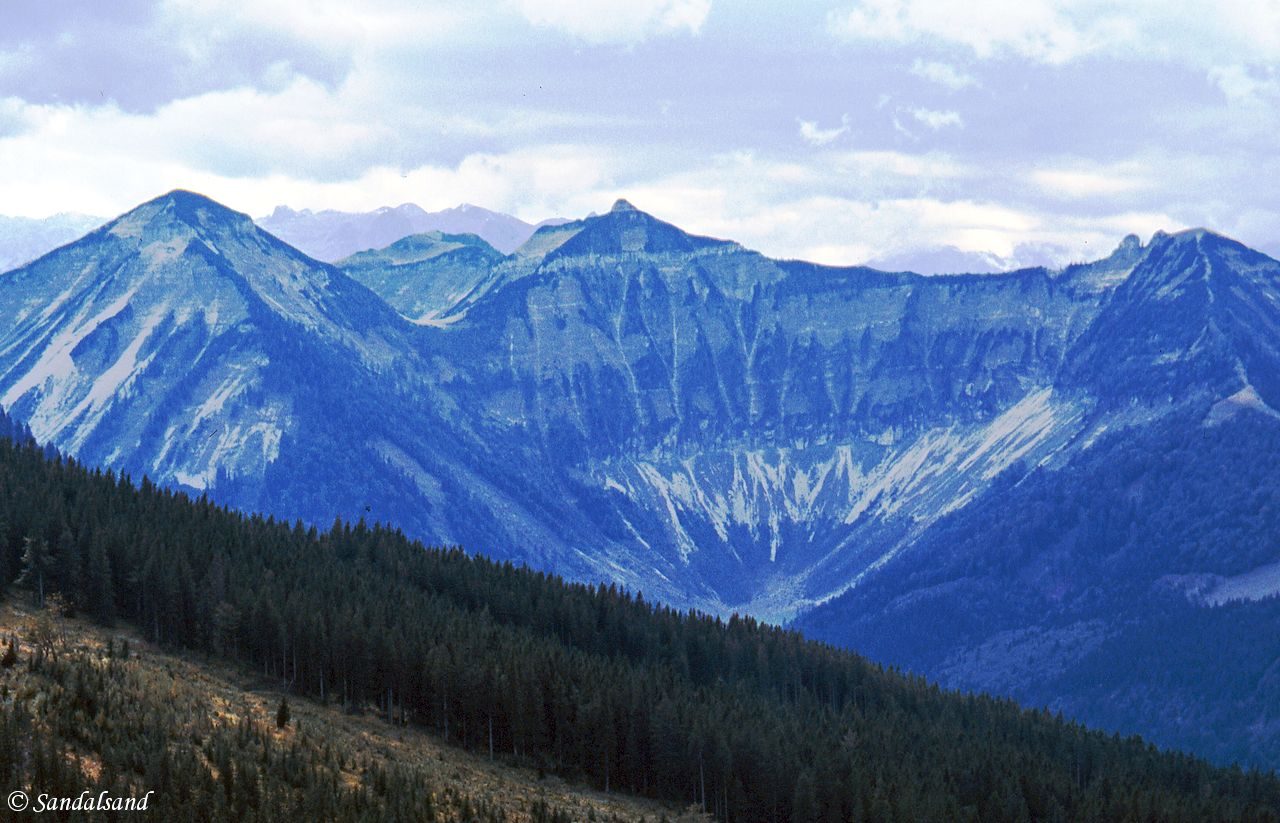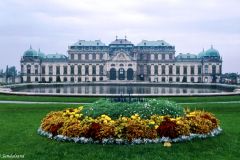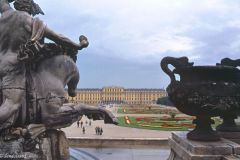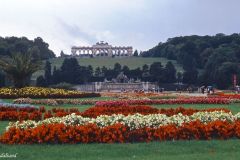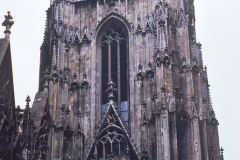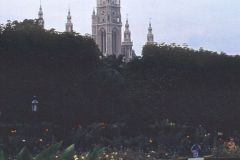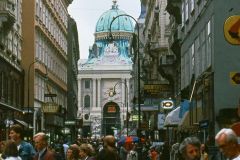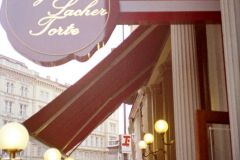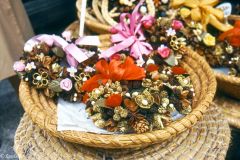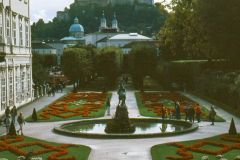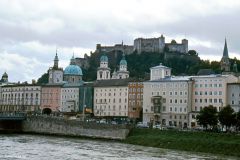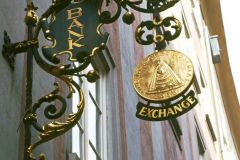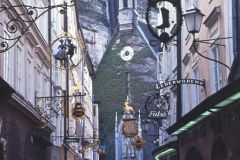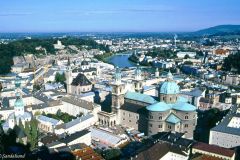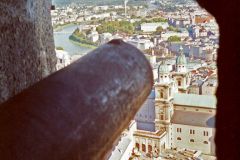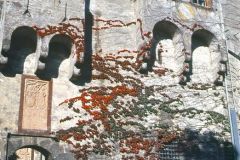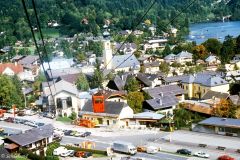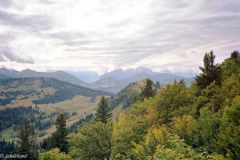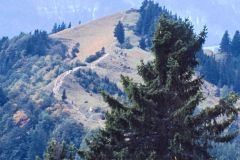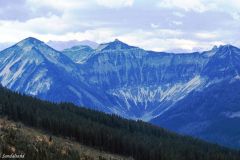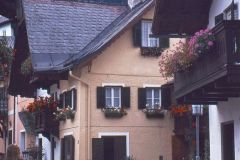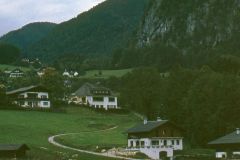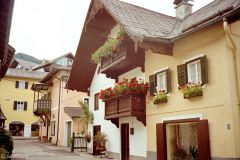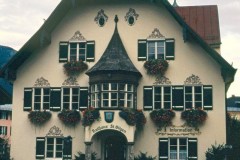On our InterRail in Europe we had reached Austria. Here we went east to the capital of Vienna and then Salzkammergut, a region in the west. These last parts of this one month InterRail to Eastern Europe involves going west to Austria and Belgium and the long way home to Norway. I have split the story in two. First off is Austria.
This is article no. 5 in a series of 6. The 27 days long journey was on an InterRail train ticket a long time ago, in September 1990. We started in Norway and transited through Sweden. We then crossed the Baltic Sea to East Germany (DDR), and continued to West Germany (BRD), Czechoslovakia, Hungary, Austria and Belgium. What follows are transcripts from my travel diary at the time. I have changed or added very little.
Sunday 23.9.1990, Vienna
Getting there
We woke up early in Sopron, Hungary, passed through a fast passport and customs control and sat down on the train – and into Austria we went. We didn’t notice the actual border crossing, partly because of a Hungarian who collected postcards from all over the world also wanted ours – and he was talking all the time.
But the fact that we had entered Austria we noticed, on cars and houses. Quite a different standard.
This train only went to Wiener Neustadt a distance south of Vienna, but we just changed trains into Vienna, quite easy when you have an InterRail ticket. On the Wien Südbahnhof I exchanged a couple hundred DM. We bought a bus ticket in a kiosk and took a bus to a youth hostel.
The place is called Turmherberge, not without reason: It is located inside a church tower. I had a bed on the 8th floor, with no elevator. Fair enough, and cheap (about 25-30 NOK, 4-5 USD).
The palaces
We went out sightseeing, it was a rainy day. First we went back to the railway station and the Belvedere Palace in a park nearby. It is big. Then we took buss and metro on to the famous Schönbrunn, a large palace complex in a large park. We joined a guided tour in the palace of Maria Theresia and Frans Josef, which in its time had housed the Congress of Vienna. It was worth the long waiting time. Fantastic.
City centre
We continued our tour by going back to the city centre and Stefanplatz. It had several great monumental buildings. The centre was crowded, even on a Sunday. It is exciting to come to the West again: Looking into the window displays (expensive) and watching people (many with traditional Tyrolean clothes, although with a modern design).
My girl-friend had a good time, but I could hold my tempers about big cities. We had the world famous Sacher chocolate cake and ended the day with Indian food.
Monday 24.9.1990, Salzburg
We had actually paid for two nights here in Vienna, but really felt like we had seen what we wanted. So we asked for and got our money back for night number two. We then found a train going to Salzburg, and the journey went smooth. Pleasant carriages and very green scenery outside.
In Salzburg the youth hostels were closed in the middle of the day, so we put our bags into a locker, exchanged another 200 (incredibly how fast money runs here), and walked off.
It is a beautiful city, at least the old part. It is situated along a river, under a perfectly kept medieval castle, and with narrow streets and wonderful squares.
We found a youth hostel, after lining up at another for an hour. There is an incredible number of tourists here. We paid 50 NOK (8 USD), including breakfast.
In the evening we wanted to take a bus into town, but on the bus stop we met an Austrian who invited us home. He was a little drunk, but we had a nice time with dinner and talk. He was a bachelor and kept complaining about the prices. Definitely interesting, even though Austrian German is pretty difficult to understand. (We speak German quite well.)
Tuesday 25.9, Salzburg – Salzkammergut
We went up to the castle for a look. It was absolutely interesting with a wonderful view of the surrounding mountains and the town below.
Then we took off with a bus to St. Gilgen. Beautiful. The bus climbed up the towards the mountain tops, passed by Tyrolean houses and green, green fields. We drove through what must be the most gorgeous village I have ever been to, Fuschgl, before arriving in St. Gilgen. This is a small, pleasant town at the Wolfgangsee, a lake well known from many a German class song at home.
We took a cable car seating four up to Zwölferhorn at 1522 metres. Exciting. There we went on an hour long hike with beautiful views in all directions: The lowlands below Salzburg and the highlands with Dachstein in the North.
We took a bus back to Salzburg and waited in a patisserie until departure time. We had bought a sleeping car (165 schilling) to Cologne via Munich. From there we tomorrow morning continue on to Brussels, Belgium. Today we exchanged another 200 DM.
Money spent in Austria: 300 NOK (50 USD) per person per day. A lot.
Our journey on a map
This is the map of our journey through parts of Europe, on this InterRail. It includes all published articles, both travelogues and the World heritage sites we visited. There are also markers indicating links to articles with pictures from a particular country (including pictures from other trips).
We travelled by train, however the lines on the map show what a road trip by car would have been. Unfortunately, it is not possible to draw train lines on Google Maps.
Read more
This is an article in a series of six from a journey through East Germany (DDR), West Germany (BRD), Czechoslovakia, Hungary, Austria and Belgium in 1990. The text is a transcript of my travel diary at the time and illustrated with my photographs.
(1) East Germany: This is my diary from a four week train journey to Eastern Europe. We started in Oslo and crossed the Baltic Sea from Sweden to East Germany, at the time it was still DDR. After this we continued to Czechoslovakia and Hungary before cutting straight west through Austria to Belgium, visiting friends there. The return brought us back home by way of Germany, Denmark and Sweden.
(2) Czechoslovakia (1): Unlike East and West Germany, this next chapter is about a country still united, later divided. It tells the story of a country rich in history, and may give some hints of an emerging future. I have split this description in two, this part is about the present-day Czech Republic, the next part about Slovakia.
(3) Czechoslovakia (2): My journey through the now non-existing country of Czechoslovakia here continues with the eastern part of Slovakia.
(4) Hungary: Hungary is a very nice country, with beautiful scenery, good wine and transportation challenges.
(5) Austria: These last parts of this one month InterRail to Eastern Europe involves going west to Austria and Belgium and the long way home to Norway. I have split the story in two. First off is Austria.
NEXT CHAPTER: (6) Belgium: Famous squares and statues in Brussels and the return to Norway.

